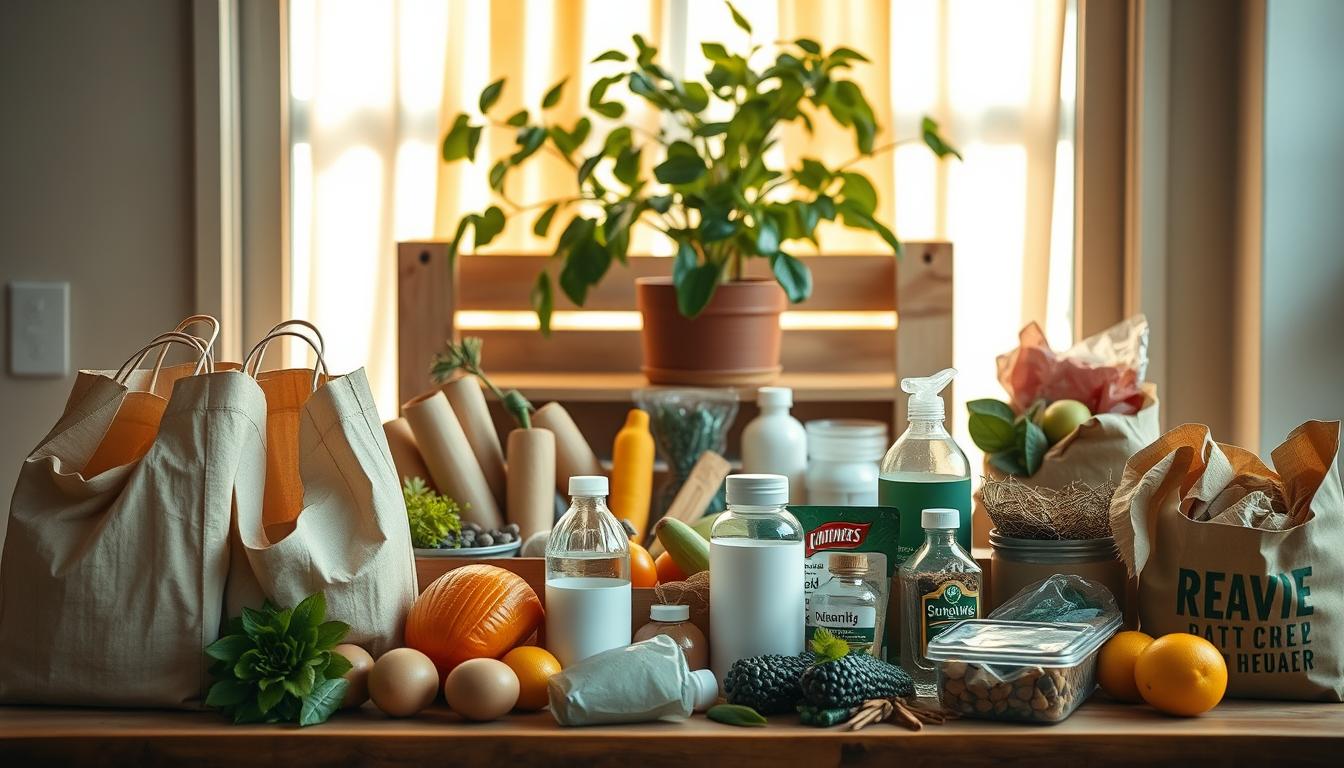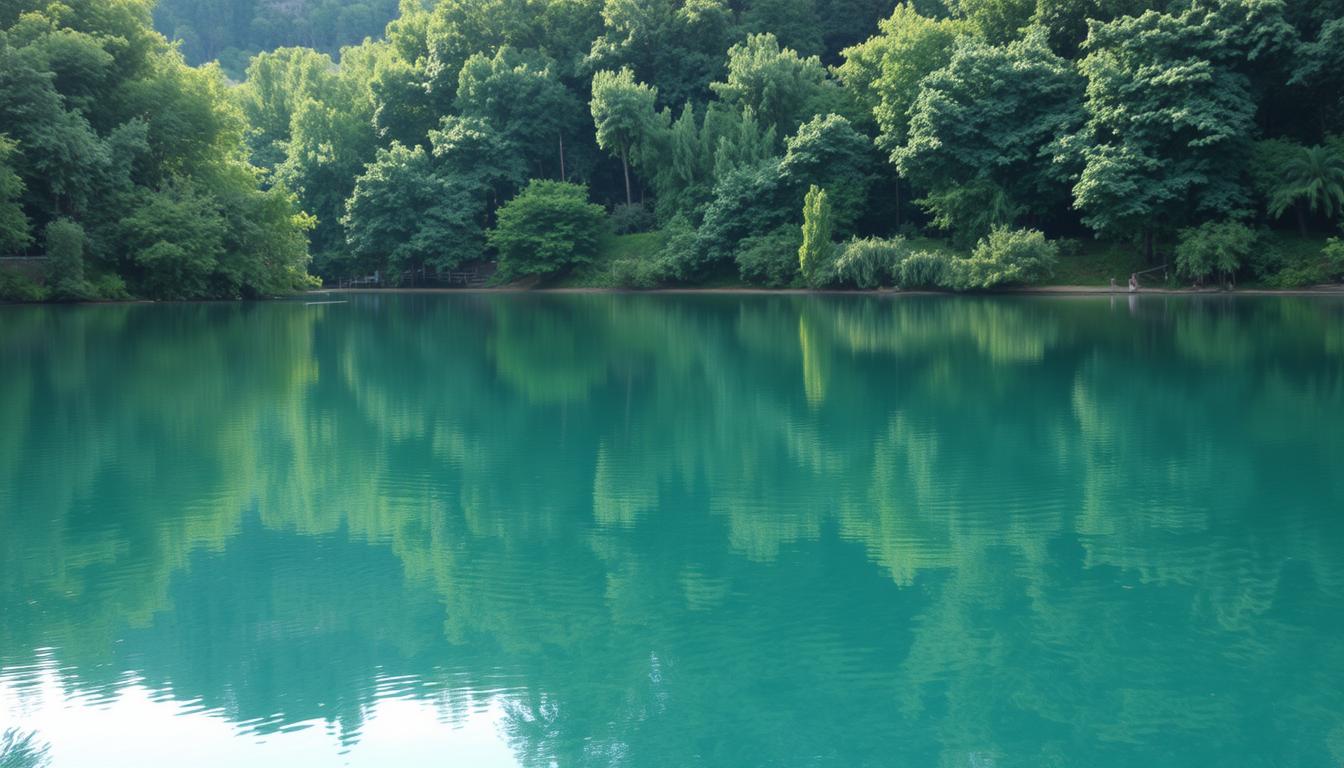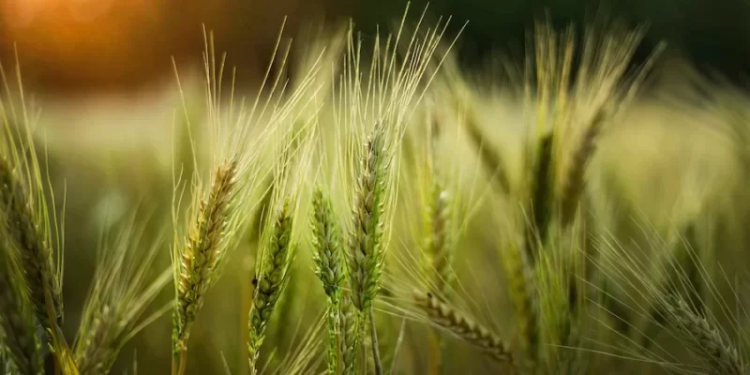Can one person’s daily choices actually help the planet, or is change only possible at scale?
Overconsumption in wealthy countries drives the current environmental crisis. A person in Nigeria emits far less CO2 each year than someone in the UK or the US, and global estimates show we would need three to five planets if everyone lived like the average Brit or American.
The good news is that small, steady shifts in consumption add up. This guide lays out practical ways people can lower their footprint while fitting into real life.
Expect clear actions: smarter shopping, travel choices, and simple home swaps that cut strain on shared resources and help fight climate change.

Key Takeaways
- Individual habits shape collective impact; small changes compound.
- Use data to right-size demand and protect shared resources.
- Prioritize high-impact actions like transport and food choices.
- Measure your footprint to track progress and stay motivated.
- Start with easy swaps and scale to longer-term lifestyle shifts.
Smart Shopping Swaps to Cut Waste and Plastic Pollution
Every product in your shopping cart carries an upstream footprint from extraction to disposal. Pause before you buy and ask whether an item will last, can be repaired, or already exists secondhand. Small shifts at purchase reduce demand for new production and lower greenhouse gas emissions tied to factories and shipping.
Think twice before buying
Choose durable products with minimal packaging. Opting for secondhand or refurbished items stretches product life and prevents waste at end-of-life.
Ditch single-use plastic
At least 14 million tons of plastic enter oceans each year and make up about 80% of marine debris. This plastic kills seabirds, turtles, seals, and other wildlife through ingestion and entanglement.
Swap disposable bags, bottles, straws, and to-go cups for reusables to cut plastic pollution and reduce the air impacts of incineration.
Pick lower-impact materials
Look for recyclable or recycled materials and brands with clear disclosures. Avoid animal-based textiles when their supply chains link to deforestation and water pollution.
Treat fast fashion as a last resort: repair, swap, and buy quality pieces to limit waste and reduce the heavy emissions from clothing production.
Simple habits that add up
Bring a reusable bag, bottle, and cup. Write to retailers asking for take-back programs and recyclable packaging. These actions shift industry practices and cut waste at scale.
Eat for the Planet: Food Choices That Shrink Your Footprint
What you put on your plate can shrink your carbon footprint while boosting health.
Shift your diet toward plants to cut the environmental impact of meals. Livestock farming uses far more land and water per calorie and produces a large share of greenhouse gas emissions. Reducing red meat servings has an outsized effect.
When you do eat animal foods, trim portions and frequency. Choose lower-impact dairy alternatives and add beans, lentils, tofu, and nuts for protein and variety.
Buy local, seasonal, and organic
Pick seasonal produce to lower transport emissions and favor organic when possible to avoid synthetic pesticides that harm soil and waterways.
Cut food waste at home
Plan weekly meals, use a first-in-first-out fridge system, and store produce properly. Nearly 40% of edible food in the U.S. goes to waste; small habits stop that loss.
Choose smart seafood and whole foods
Follow trusted guides to pick sustainable fish and rotate species to ease pressure on fisheries. Cook at home and choose minimally processed foods to reduce packaging and overall impact.
Drive Less, Fly Less: Lower Transportation Emissions in Daily Life
Daily travel choices shape household emissions and local air quality. Small shifts in how you commute cut carbon and reduce air pollution that harms public health. Walking, biking, and transit often beat solo driving for both cost and climate impact.
Walk, bike, carpool, and use public transit to cut carbon and smog
Replace solo trips with walking, biking, carpooling, or a bus/train ride. These swaps drop greenhouse emissions and lower tailpipe pollution in neighborhoods.
Plan combined errands and pick routes that avoid congestion to reduce idling and fuel waste.
Maintain vehicles and consider electric cars and car-sharing
Keep your car tuned and tires inflated. A tire 20% underinflated can raise fuel use about 10% and increase gas emissions.
If a car is needed, compare total ownership costs for electric models. Look into workplace charging, tax credits, and local incentives.
Use car-sharing for occasional trips to cut the number of vehicles on the road and ease parking demand.
Rethink air travel; choose train or bus for closer trips
Air travel is one of the largest contributors to personal transport emissions. For regional travel, trains and buses often produce far less carbon per passenger.
Limit long-haul flights when possible, choose closer destinations, and combine trips to lower your overall climate footprint.
Advocate for change: support safe bike lanes, stronger transit funding, and cleaner public fleets to scale reductions in pollution and protect community health.
Green Your Home: Energy, Water, and Air Quality Improvements
A few practical home changes can reduce utility bills and improve indoor air quality. Start with a free or low-cost energy audit to find drafty spots, insufficient insulation, and inefficient systems. Targeted upgrades cut greenhouse emissions and make your home more comfortable.

Boost efficiency with smart upgrades
Seal leaks, add attic insulation, and fit a programmable or smart thermostat to avoid wasted heat and cooling. Swap to LED bulbs and pick ENERGY STAR appliances to lower electricity use and emissions.
Maintain HVAC systems and change filters regularly. Cleaner vents improve indoor air and support household health.
Choose cleaner power options
If your utility offers a plan with at least half renewables, consider switching to reduce climate pollution from the grid. Where practical, explore rooftop solar or solar water heating; many states offer incentives and net metering.
Be water wise and protect land
Fix leaks, install WaterSense fixtures, and run full loads in dishwashers and washers to save water and energy. Convert thirsty lawns to xeriscaping with native plants to reduce outdoor water use, cut mowing, and create habitat on your land.
Pick low-VOC paints and durable, repairable products to reduce indoor pollution and limit the need for frequent replacement. These steps lower production impacts and stretch household resources over time.
Money With a Mission: Ethical Finance and Wildlife-Safe Products
Where you bank and invest shapes markets that affect forests, oceans, and wildlife. Your deposits and retirement choices can steer capital toward companies that protect habitats or away from those that harm them.
Bank and invest in ways that reduce environmental harm
Review where your money sleeps—checking accounts, 401(k)s, and brokerage funds. Pick banks and funds that apply environmental and biodiversity screens.
Ask providers for clear policies on climate, deforestation, and sensitive land conversion. Favor funds that exclude firms linked to habitat loss.
Boycott products that endanger species
Vote with your dollars by avoiding products tied to exploitation of imperiled species. Choose materials with credible chain-of-custody labels and traceability.
Skip menu items that harm marine species and support restaurants that commit to responsible sourcing. Aggregate consumer demand nudges supply chains to change.
Small shifts add up: shift purchases and investments toward verified options, support conservation nonprofits, and ask companies for transparency and take-back programs. When people align money with values, the world sees lasting impact for wildlife and communities.
How to consume more sustainably starting today
A quick footprint check reveals which daily choices strain the planet and which are easy to fix. Use a simple tool to map your impact and spot the best ways to act.

Use an ecological footprint calculator and set realistic goals
Start with the Global Footprint Network’s online calculator to see where your consumption creates the largest environmental impact. The tool highlights which habits use the most resources and offers clear areas to reduce environmental harm.
Pick two or three practical steps this week — a transit swap, a meatless day, or a home energy tweak. Focus on the largest sources first; that yields the biggest gains for the planet with the least effort.
Track progress monthly and adjust goals. Share plans with family or coworkers to build accountability and unlock collaborative ways to save, like carpooling or bulk buying.
Use simple checklists for shopping, meals, and home energy so better habits stick. Revisit choices seasonally and celebrate small wins in reduced demand on shared resources rather than chasing perfection.
Conclusion
Simple habits in the kitchen, at the store, and on the road cut carbon and protect wildlife.
Build meals around plants, trim meat and dairy portions, and try whole grains, beans, and seasonal foods to lower pressure on land and farming. These diet shifts help your health and shrink greenhouse gas emissions tied to production.
Plan and store food to stop avoidable waste—nearly 40% of edible food in the U.S. is lost. Replace disposables with reusables to cut plastic that harms oceans and species, and pick products made with clear, safer materials.
Keep climate change in view when you travel, use energy at home, or shop. Pick one doable action today, make it stick, then add the next—steady changes add up and protect the planet and public health.
FAQ
What are simple shopping swaps to reduce waste and plastic pollution?
Start by choosing secondhand goods and durable items with minimal packaging. Bring reusable bags, a refillable water bottle, and a coffee mug to avoid single-use plastics. Pick products in recyclable or compostable packaging and favor brands that disclose materials and waste policies.
How can I reduce the environmental impact of my clothing choices?
Repair garments, buy higher-quality pieces that last longer, and join clothing swaps or shop at thrift stores. Avoid fast-fashion brands when possible and limit animal-based textiles like conventional leather and wool linked to deforestation and water pollution. Choose natural or recycled fibers with transparent supply chains.
What food choices most effectively lower greenhouse gas emissions?
Shift toward plant-based meals and cut back on meat and dairy, which are large sources of methane and carbon emissions. Incorporate more legumes, whole grains, and seasonal produce. Diversify protein sources by choosing sustainable seafood, beans, and plant-based alternatives.
How can I reduce food waste at home?
Plan meals, shop with a list, and store food properly to extend freshness. Use leftovers creatively, freeze excess, and compost scraps when possible. Small habits like first-in, first-out fridge rotation help prevent spoilage and save money.
What transportation actions cut carbon and local air pollution?
Walk, bike, carpool, or use public transit for daily trips to lower emissions and reduce congestion. Keep vehicles well-maintained to improve fuel efficiency, and consider electric vehicles or car-sharing services if driving is necessary. For shorter routes, choose buses or trains over flying.
Which home upgrades give the best returns for energy and water savings?
Improve insulation, seal drafts, and install LED lighting and a smart thermostat to cut energy use. Fix leaks, fit low-flow faucets and showerheads, and use drought-tolerant landscaping or xeriscaping to reduce water demand. These steps lower bills and shrink your household footprint.
How can I support conservation through banking and purchases?
Choose banks and investment funds that screen out industries tied to deforestation, fossil fuels, and wildlife harm. Buy products certified by credible ecolabels and avoid goods linked to habitat loss. Your spending and savings can drive demand for more responsible companies.
What tools help me start reducing my ecological footprint today?
Use an ecological footprint or carbon calculator to identify major impact areas like diet, travel, and home energy. Set achievable goals—such as one plant-forward week per month, reducing flights, or eliminating single-use plastics—and track progress. Small, consistent changes add up.
How does choosing local and seasonal food help the planet?
Buying local and seasonal produce cuts transport emissions, supports regional farmers, and often requires fewer preservatives and packaging. Seasonal eating also tends to use less irrigation and energy compared with out-of-season imports grown in intensive systems.
Are plant-based diets healthier and better for the environment?
Well-planned plant-forward diets can improve health by increasing fiber and reducing saturated fat. Environmentally, they typically use less land, water, and produce fewer greenhouse gases than diets high in meat and dairy. Balance your meals with diverse whole foods for nutrition and sustainability.
How can I pick sustainable seafood and avoid harming fish populations?
Look for seafood certified by organizations like the Marine Stewardship Council or follow guides from Monterey Bay Aquarium’s Seafood Watch. Favor species with healthy populations and low-impact fishing or aquaculture methods to protect marine ecosystems and fisheries livelihoods.
What role does reducing plastic play in protecting wildlife and ecosystems?
Cutting single-use plastics reduces pollution that harms marine life, birds, and other wildlife. Plastics break into microplastics that contaminate food chains and waterways. Choosing reusable alternatives and supporting plastic-reduction policies helps protect species and habitats.





